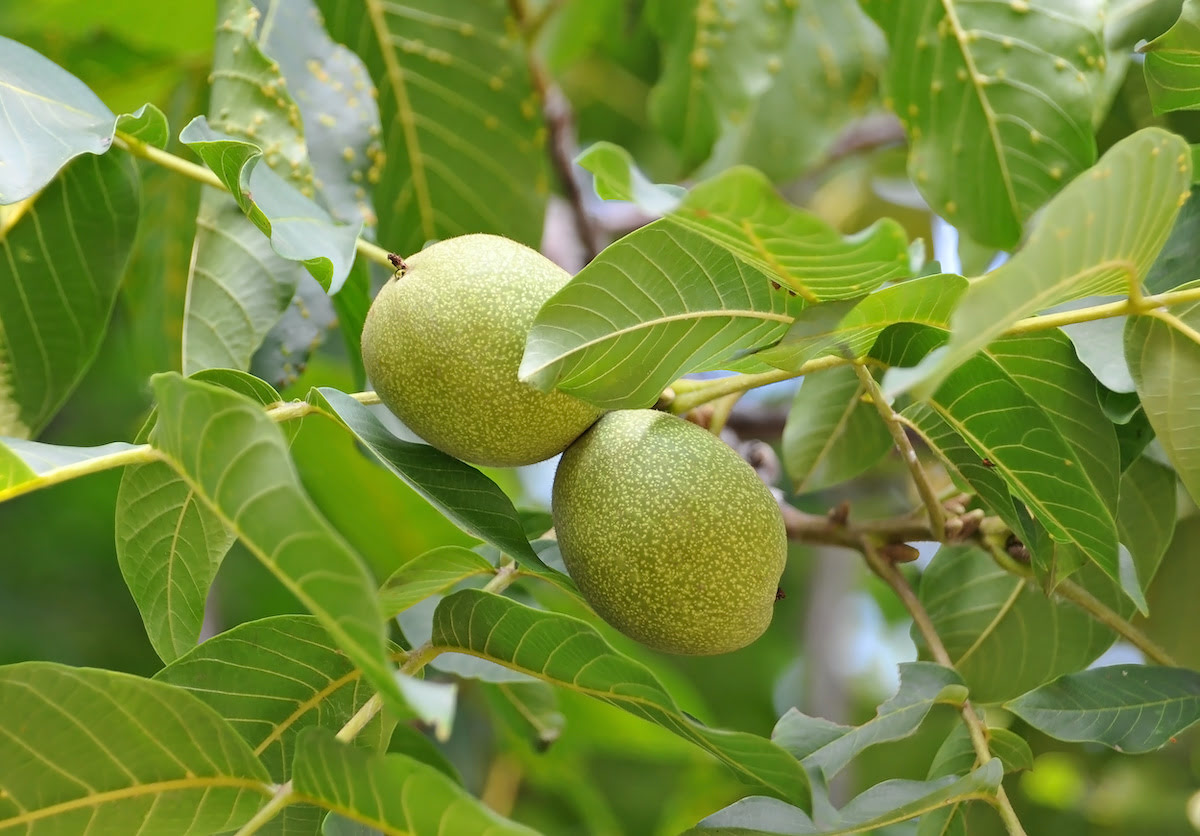Home>Gardening News and Trends>Latest News>Who Cut Down The Ancient Trees


Latest News
Who Cut Down The Ancient Trees
Modified: February 8, 2024
Discover the truth behind the ancient trees' destruction in our latest news. Who cut down these majestic landmarks? Get the latest updates now!
(Many of the links in this article redirect to a specific reviewed product. Your purchase of these products through affiliate links helps to generate commission for Chicagolandgardening.com, at no extra cost. Learn more)
Table of Contents
- Introduction
- Historical significance of ancient trees
- The disappearance of ancient trees
- Environmental impact of cutting down ancient trees
- Factors contributing to the cutting down of ancient trees
- Role of government and legislation in protecting ancient trees
- Conservation efforts and initiatives to prevent the cutting down of ancient trees
- Conclusion
Introduction
Ancient trees, majestic and resilient, have held a significant place in our history and culture. These remarkable natural wonders have witnessed the passage of time, bearing witness to generations of change and providing a unique connection to our past. From ancient oak groves to towering redwoods, these living monuments have become symbols of strength and endurance.
But unfortunately, in recent years, we have been witness to a distressing trend: the disappearance of ancient trees. These vital components of our ecosystem are being recklessly cut down and destroyed, endangering not only our natural heritage, but also the delicate balance of our environment.
Ancient trees carry with them a wealth of historical and ecological significance. They have often been revered and served as landmarks in communities for centuries, serving as living witnesses to significant events and cultural milestones. The loss of these ancient trees means the erasure of our shared history, severing the connection between past and present.
Moreover, these trees play a crucial role in maintaining the health of our environment. They provide habitats for countless species, supporting biodiversity and promoting ecological balance. The complex root systems of ancient trees help prevent soil erosion and contribute to water filtration, ensuring the sustainability of surrounding ecosystems.
The disappearance of ancient trees is a cause for concern on multiple levels. The relentless clearing of forests and woodlands results in the loss of crucial wildlife habitats, leading to a decline in biodiversity. In addition, the destruction of these trees releases substantial amounts of stored carbon dioxide into the atmosphere, exacerbating the issue of climate change.
But what is causing the cutting down of these age-old sentinels? The reasons are multifaceted, ranging from commercial exploitation to urban development. Ancient trees are often felled to make way for agricultural expansion, housing projects, or infrastructure development, fueled by the relentless demands of a growing population and rampant consumerism.
However, it is not all doom and gloom. There is hope on the horizon. Governments, environmental organizations, and concerned individuals are taking action to protect and preserve these ancient sentinels. Legislation has been put in place to regulate the cutting down of ancient trees, and initiatives are being launched to raise awareness and educate the public about the importance of conservation efforts.
In this article, we will explore the historical significance of ancient trees, the environmental impact of their disappearance, the factors contributing to their cutting down, and the role of government and legislation in protecting them. We will also delve into the various conservation efforts and initiatives aimed at preventing the loss of these invaluable natural treasures.
Let us embark on a journey to unravel the mystery of who is cutting down these ancient trees and what can be done to save them from the brink of extinction.
Historical significance of ancient trees
Ancient trees have a profound historical significance, weaving a tapestry of stories and connections with our past. They have stood as silent witnesses to countless generations, their enduring presence marking the passage of time. These ancient sentinels have often played a central role in shaping communities and have been revered and celebrated throughout history.
One notable aspect of the historical significance of ancient trees is their association with cultural and religious practices. In many traditions, specific ancient trees hold sacred status and are considered sites of spiritual significance. They act as gathering places for ceremonies, rituals, and celebrations, providing a link between humanity and the divine.
For example, the Tree of Life in various mythologies symbolizes immortality and the connection between the earthly and spiritual realms. Ancient trees such as the Bodhi Tree in Buddhism and the Yggdrasil tree in Norse mythology hold immense spiritual and symbolic significance, representing enlightenment and the unity of the universe.
Ancient trees have also served as landmarks and meeting points throughout history. Their grandeur and longevity made them ideal spots for social gatherings and community events. They became natural gathering places for people to exchange ideas, resolve disputes, or simply enjoy the shade and tranquility they offered.
Furthermore, ancient trees have often been linked to historical figures and events. They bear witness to the footsteps of renowned leaders, artists, and philosophers who sought solace, inspiration, or contemplation among their branches. These trees become living memorials, tangible reminders of great minds and significant moments.
One notable example is the Major Oak in Sherwood Forest, England, associated with the legendary figure of Robin Hood. This ancient oak tree is believed to have provided shelter for the famous outlaw and his band of Merry Men, fostering a sense of adventure, rebellion, and camaraderie.
Ancient trees have also played a crucial role in various scientific endeavors. Their growth patterns, rings, and even the insects and lichens that inhabit them provide scientists with valuable insights into climate change, ecological interactions, and the Earth’s history. By studying these ancient sentinels, researchers can unlock the secrets of the past and gain a deeper understanding of our planet’s evolution.
The historical significance of ancient trees extends beyond human history. They have coexisted with numerous species, witnessing the rise and fall of different ecosystems. Ancient trees have shaped the landscape and influenced the distribution and abundance of wildlife throughout the ages.
These living monuments have an incomparable value in preserving our cultural heritage and connecting us with the fabric of our history. Their significance goes beyond our individual lives and reminds us of the collective journey that we are a part of.
The disappearance of ancient trees
The alarming disappearance of ancient trees is a troubling trend that threatens both our natural heritage and the delicate balance of our environment. These magnificent giants, which have stood for centuries, are vanishing at an unprecedented rate, leaving behind a void that cannot be easily filled.
One of the main reasons for the disappearance of ancient trees is deforestation. As human populations continue to grow and demand for resources increases, vast areas of forests and woodlands are cleared for commercial purposes. Logging companies, driven by profit, often target ancient trees for their high-quality timber, disregarding the irreplaceable value these trees hold in terms of their cultural and ecological significance.
Urbanization and expanding infrastructure also contribute to the loss of ancient trees. As cities expand and new developments are built, green spaces and forests are often sacrificed. Construction projects, roads, and housing developments encroach upon ancient tree habitats, leading to their removal or destruction.
Another significant factor in the disappearance of ancient trees is the impact of climate change. Rising temperatures, changing rainfall patterns, and extreme weather events pose significant challenges for these long-living giants. Droughts, storms, and pests can weaken the trees, making them more susceptible to diseases and ultimately leading to their demise. Additionally, increased fire risk, often exacerbated by climate change, poses a serious threat to ancient trees, as well as the ecosystems they support.
Human activities also play a detrimental role. Pollution, including air and water pollution, can have damaging effects on the health and vitality of ancient trees. Industrial emissions, agricultural runoff, and pesticides can weaken their immune systems and disrupt their delicate balance with the surrounding environment, making them more vulnerable to diseases and pests.
Furthermore, the lack of awareness and appreciation for the value of ancient trees has contributed to their disappearance. Many individuals and communities may not fully understand the role these trees play in maintaining the health of ecosystems or the cultural significance they hold. As a result, ancient trees are often undervalued and overlooked, leading to their destruction without consideration for the long-term consequences.
The disappearance of ancient trees has far-reaching implications. The loss of these majestic giants disrupts the delicate balance of ecosystems, affecting biodiversity and the intricate web of life. Species that rely on ancient trees for habitat lose their homes and may face extinction. The removal of these trees also disrupts vital ecosystem services, such as soil stabilization, water regulation, and carbon sequestration.
The disappearance of ancient trees is not only an ecological crisis but also a cultural loss. The erasure of these living witnesses to our history and heritage severs the connection between past and present, robbing future generations of the opportunity to learn from and appreciate the lessons these trees can teach us.
It is crucial that we recognize the value of ancient trees and take immediate action to protect and preserve them. Through education, conservation efforts, and sustainable practices, we can strive to reverse the trend of their disappearance and ensure that these magnificent sentinels continue to inspire and thrive for generations to come.
Environmental impact of cutting down ancient trees
The cutting down of ancient trees has severe implications for our environment, disrupting the delicate balance of ecosystems and contributing to the ongoing environmental crisis. These magnificent giants play a crucial role in maintaining the health of our planet and their removal has far-reaching consequences.
One of the key environmental impacts of cutting down ancient trees is the loss of biodiversity. Ancient trees provide vital habitats for a diverse array of species, including insects, birds, mammals, and fungi. With their extensive branches, hollows, and decaying wood, these trees offer shelter, nesting sites, and feeding opportunities. When ancient trees are cut down, entire ecosystems can collapse, leading to a decline in biodiversity and the potential extinction of species.
Ancient trees also contribute significantly to carbon sequestration. Over their lifespan, these trees absorb and store large amounts of carbon dioxide, one of the main greenhouse gases responsible for climate change. Their removal releases this stored carbon back into the atmosphere, exacerbating the global warming crisis. The loss of ancient trees intensifies climate change and diminishes our ability to mitigate its effects.
Furthermore, ancient trees play a pivotal role in water regulation. Their intricate root systems help to stabilize soil, preventing erosion and reducing the risk of landslides. The dense canopies of these trees intercept rainfall, reducing runoff and allowing water to filter down into the soil, replenishing groundwater supplies. Without the presence of ancient trees, water cycles are disrupted, leading to increased runoff, soil degradation, and water scarcity.
Moreover, the removal of ancient trees can result in significant ecological imbalances. These trees are often home to a diverse range of interdependent plants and fungi, creating intricate and delicate ecological networks. When ancient trees are cut down, the relationships between these species are disrupted, leading to cascading effects throughout the ecosystem. The loss of these connections can result in the spread of invasive species, altered nutrient cycles, and the degradation of surrounding habitats.
The absence of ancient trees also impacts the quality of the air we breathe. These trees act as natural air filters, trapping pollutants and particulate matter. Their leaves absorb harmful gases, such as nitrogen dioxide and ozone, while releasing clean oxygen. When ancient trees are removed, the air quality in the surrounding area can deteriorate, posing health risks for both humans and wildlife.
The environmental impact of cutting down ancient trees is not limited to the immediate area of their removal. These trees are part of interconnected ecosystems that span large areas. Their loss can have ripple effects, impacting wildlife populations, watersheds, and overall ecosystem health far beyond the specific location of deforestation.
It is crucial that we recognize the immense environmental value of ancient trees and take immediate action to protect and conserve them. Through sustainable forestry practices, reforestation efforts, and the implementation of strict regulations, we can safeguard these vital components of our natural heritage and work towards restoring and preserving the delicate balance of our ecosystems.
Factors contributing to the cutting down of ancient trees
The cutting down of ancient trees is driven by a variety of factors, stemming from human activities and societal demands. These factors reflect a complex interplay between economic, social, and cultural forces that contribute to the ongoing destruction of these vital natural resources.
One of the primary factors contributing to the cutting down of ancient trees is commercial exploitation. Ancient trees, particularly those with high-quality timber, are often targeted by logging companies for profit. The demand for timber products, ranging from furniture to construction materials, drives the relentless felling of ancient trees, disregarding their cultural and ecological significance.
The relentless expansion of human settlements and urban areas is another significant factor. As populations grow and cities expand, the need for land increases. Forests and woodlands, often home to ancient trees, are cleared to make way for housing developments, infrastructure projects, and industrial zones. The rapid pace of urbanization leaves little room for the preservation of ancient trees and their habitats.
Agricultural expansion is also a major driver of ancient tree destruction. The demand for food and agricultural products leads to the conversion of forests into farmland. Ancient trees are often collateral damage in this process as land is cleared to accommodate large-scale farming operations. Deforestation for agriculture contributes to the loss of habitat for countless species and disrupts the delicate balance of ecosystems.
Illegal logging is another significant factor in the cutting down of ancient trees. Unregulated and clandestine activities by individuals or criminal organizations exploit ancient trees without adherence to sustainable forestry practices. The illicit trade in timber fuels the destruction of ancient tree populations, exacerbating the already dire consequences of deforestation.
Weak or inadequate legislation and enforcement also contribute to the disappearance of ancient trees. In regions where environmental protections are lacking or where laws are not strictly enforced, the cutting down of ancient trees can occur with impunity. The absence of legal mechanisms to safeguard these natural treasures allows for their wanton destruction without accountability.
Furthermore, lack of awareness and education about the value of ancient trees and the importance of conservation efforts also plays a role. Many communities and individuals fail to recognize the cultural and ecological significance of these trees, making them more susceptible to overlooking their preservation. This lack of understanding and appreciation perpetuates the cycle of destruction and impedes efforts to protect and conserve ancient trees.
The combination of these factors contributes to the ongoing cutting down of ancient trees, leading to the loss of irreplaceable natural resources and the deterioration of ecosystems. It is imperative that we address these contributing factors through sustainable land management, strong legislation, education, and raising public awareness. By doing so, we can work towards creating a future where the cutting down of ancient trees is minimized and the preservation of these vital natural treasures is prioritized.
Role of government and legislation in protecting ancient trees
The preservation of ancient trees relies on the active involvement of governments and the implementation of robust legislation to protect these invaluable natural resources. Government policies, regulations, and enforcement are essential in safeguarding ancient trees and ensuring their continued existence for future generations.
One of the primary roles of government is to establish legal frameworks to protect ancient trees. This includes designating protected areas, such as national parks or nature reserves, where ancient tree populations can thrive under legal safeguards. Governments can also enact specific laws and regulations that prohibit or limit the cutting down of ancient trees, or that require permission and permits for their removal.
Government-led initiatives can also focus on raising awareness about the importance of ancient trees. Educational campaigns can be implemented to inform the public about the cultural and ecological significance of these trees, promoting a sense of stewardship and responsibility. By fostering a deeper understanding and appreciation, governments can encourage citizens to support conservation efforts and become active participants in protecting ancient trees.
Government agencies, such as environmental departments and forestry services, play a crucial role in enforcing legislation related to ancient tree protection. These agencies are responsible for monitoring and regulating activities that may endanger ancient tree populations. They can conduct inspections, issue fines, and take legal action against individuals or organizations that violate laws pertaining to the cutting down of ancient trees.
International cooperation is also important in protecting ancient trees, as some species of ancient trees may span multiple countries. Governments can engage in collaborative efforts with other nations to establish transnational agreements, coordinate conservation strategies, and share best practices. International treaties and conventions, such as the Convention on Biological Diversity, can facilitate cooperation and the exchange of knowledge and resources to protect ancient tree populations.
Government support is instrumental in funding research and conservation projects aimed at protecting ancient trees. Governments can allocate resources for scientific studies, monitoring programs, and restoration initiatives. Financial incentives can also be provided to landowners and communities who actively participate in the preservation of ancient trees, encouraging sustainable land management practices and conservation efforts.
Furthermore, governments can work in collaboration with local communities, indigenous groups, and environmental organizations to develop and implement sustainable management plans for ancient tree populations. By including the perspectives and traditional knowledge of these stakeholders, governments can ensure more effective and inclusive conservation strategies that respect cultural heritage and promote sustainable livelihoods.
The role of government and legislation in protecting ancient trees is of utmost importance. By implementing strong legal frameworks, promoting awareness, enforcing regulations, providing financial support, and fostering collaboration, governments can lead the way in preserving these irreplaceable natural treasures. Protecting ancient trees is not only essential for the maintenance of biodiversity and ecological stability, but it also ensures the continuity of our cultural heritage and strengthens our connection with the natural world.
Conservation efforts and initiatives to prevent the cutting down of ancient trees
The urgent need to protect ancient trees has given rise to numerous conservation efforts and initiatives aimed at preventing their cutting down. These initiatives involve a range of stakeholders, including governments, non-profit organizations, local communities, and concerned individuals, all working collectively to preserve these invaluable natural treasures.
One of the primary conservation efforts focuses on raising awareness about the importance of ancient trees. Campaigns are launched to educate the public, schools, and communities about the ecological and cultural significance of these trees. By fostering a deeper understanding and appreciation, these efforts aim to inspire a sense of responsibility and encourage individuals to take action to protect ancient trees.
Reforestation projects play a crucial role in preserving ancient trees. Efforts are made to plant new trees and restore degraded habitats with species that are native to the area. Reforestation not only helps to replenish the lost tree population but also creates new habitat for wildlife and promotes biodiversity. These initiatives often involve partnerships between governments, conservation organizations, and local communities who work together to ensure the success of these restoration efforts.
Protected areas are established to safeguard ancient trees and their habitats. National parks, nature reserves, and other protected areas are designated to provide legal protection and regulation for these ancient tree populations. These areas often have strict guidelines regarding human activities, ensuring that the trees are not disturbed, and that their natural ecosystems are preserved
.
Community engagement is crucial in the conservation of ancient trees. Collaborative efforts with local communities, indigenous groups, and landowners are encouraged to ensure the long-term preservation of these trees. Communities are involved in decision-making processes, sustainable land management practices, and initiatives that promote the value of retaining ancient trees as an important part of their cultural heritage and local ecosystems.
Scientific research is essential in understanding the needs and vulnerabilities of ancient tree populations. Research projects focus on studying the growth patterns, dynamics, and interactions of these trees. This knowledge helps inform effective conservation strategies and management practices, ensuring that efforts to protect ancient trees are based on sound science and evidence.
Additionally, financial incentives and support are provided to landowners and communities who actively participate in the preservation of ancient trees. This can include grants, subsidies, or financial assistance for implementing sustainable land management practices or participating in conservation initiatives. By providing economic incentives, these efforts promote the economic value of protecting ancient trees and ensure the integration of conservation into local livelihoods.
Collaborative partnerships between governments, non-profit organizations, and the private sector are also key to the success of conservation efforts. Joint initiatives and alliances are formed to pool together resources, expertise, and influence to tackle the challenges of protecting ancient trees. These partnerships leverage the strengths and capacities of different stakeholders to implement effective conservation programs and raise awareness on a broader scale.
Conservation efforts to prevent the cutting down of ancient trees are crucial for preserving the cultural, ecological, and environmental value they hold. Through raising awareness, reforestation, protected areas, community engagement, scientific research, financial incentives, and collaborative partnerships, we can collectively work towards a future where ancient trees continue to thrive, enriching our world and inspiring generations to come.
Conclusion
The disappearance of ancient trees is a pressing issue that demands our immediate attention. These living monuments hold immeasurable cultural, ecological, and environmental value, and their loss has far-reaching consequences. The destruction of ancient trees disrupts ecosystems, diminishes biodiversity, accelerates climate change, and erases our cultural heritage.
However, there is hope. Governments, organizations, communities, and individuals are coming together to protect and preserve these majestic giants. Legislative measures are being implemented to regulate the cutting down of ancient trees, and efforts to raise awareness about their importance are gaining momentum. Sustainable land management practices, reforestation initiatives, and community engagement are being prioritized to ensure the long-term survival of ancient tree populations.
The role of ancient trees in regulating air quality, promoting water absorption, sequestering carbon, and providing habitat cannot be underestimated. Preserving these ancient sentinels is not only a matter of environmental stewardship but also a reflection of our respect for nature and our connection to the past.
As individuals, we can contribute to the protection of ancient trees in various ways. We can educate ourselves and others about their significance, support organizations and initiatives working for their conservation, and make sustainable choices that reduce the demand for products derived from their destruction.
Collectively, we must continue to advocate for stronger legislation, advocate for sustainable land-use practices, and foster a sense of responsibility towards the preservation of ancient trees. By valuing and protecting these natural wonders, we can ensure a future where ancient trees continue to inspire, enrich, and sustain life on our planet for generations to come.







